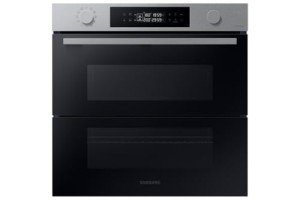The Comprehensive Guide to Built-In Ovens: Maximizing Kitchen Efficiency and Style
Built-in ovens are an important feature in modern-day kitchen areas, combining performance with streamlined design. They supply a seamless appearance, boost space efficiency, and often come with advanced features that raise the cooking experience. integrated gas oven and hob packages will look into the different kinds of built-in ovens, their advantages, important factors to consider throughout purchase, and maintenance tips.
What is a Built-In Oven?
A built-in oven is designed to be housed within cabinets, using an integrated look that saves counter area and improves the visual appeals of a kitchen. Unlike freestanding ovens, built-ins offer flexibility in terms of placement and can be picked to match the kitchen's design.
Kinds Of Built-In Ovens
There are a number of kinds of built-in ovens, each accommodating different cooking needs:
| Type | Description | Ideal Use |
|---|---|---|
| Single Oven | A standard oven with one cooking compartment. | Everyday cooking, baking. |
| Double Oven | Two different oven compartments, permitting multi-tasking. | Big meals, multi-course cooking. |
| Wall Oven | Installed at eye level, typically with sophisticated features. | Space-saving designs, ergonomic cooking. |
| Stove | Features a fan to distribute hot air, cooking food equally. | Roasting, baking, and more. |
| Steam Oven | Utilizes steam for cooking, maintaining moisture and nutrients. | Healthy cooking, baking bread. |
| Microwave | Integrates microwave and regular oven functions. | Quick meals, reheating. |
Benefits of Built-In Ovens
Built-in ovens provide many advantages, which makes them a popular option among homeowners. Some crucial advantages consist of:
- Aesthetic Appeal: They can fit seamlessly into kitchen cabinets, producing a sophisticated and consistent look.
- Area Efficiency: By making use of vertical area, they assist maximize kitchen energy, especially in smaller sized areas.
- Advanced Features: Many come geared up with wise innovation, self-cleaning options, and accuracy cooking features.
- Enhanced Accessibility: Wall ovens can be put at eye level, lowering the requirement for bending and making it simpler to keep an eye on cooking progress.
- Customizable Options: Built-in choices can be found in different sizes, surfaces, and styles, making it possible for customized kitchen style.
Factors to consider When Choosing a Built-In Oven
When picking a built-in oven, there are a number of aspects to think about to ensure that the device aligns with the user's cooking choices and kitchen design:
- Size and Capacity: Measure the setup area to make sure the chosen oven fits. Consider the oven capability based on cooking needs.
- Type of Cooking: Think about the favored cooking methods-- do you bake, roast, steam, or cook quickly? This will identify the type of oven to select.
- Features: Evaluate wise functions, temperature level probes, multiple cooking modes, and cleansing options.
- Energy Efficiency: Look for energy scores to conserve on utility bills, especially if the oven will be used frequently.
- Budget: Built-in ovens can differ significantly in price, so it's important to develop a budget plan and think about long-term investment choices.
Upkeep Tips for Built-In Ovens
To lengthen the life of a built-in oven and keep its efficiency, regular upkeep is crucial. Here are some useful suggestions:
- Cleaning: Regularly wipe down the exterior and interior surfaces. Usage specialized cleaners for stainless steel surfaces.
- Self-Cleaning: Utilize the self-cleaning function periodically to keep the interior pristine; however, avoid regular usage to prevent wear and tear.
- Inspect Seals: Inspect the door seals for any damage to avoid heat loss.
- Usage Safe Cookware: Ensure that baking sheets and pans work with the specific type of oven to prevent damage.
- Regular Inspection: Schedule expert upkeep checks at least when a year to make sure everything functions smoothly.
FAQs About Built-In Ovens
Q1: How do I select the best size built-in oven for my kitchen?A: Measure
the designated space for the oven and consider the overall capability you need based on your cooking practices.
Q2: Are built-in ovens simple to install?A: Installation can be intricate and typically needs expert assistance, specifically for electrical and gas connections. Q3: How frequently must I clean my built-in oven?A: It's a good idea to clean the oven monthly and use the self-clean feature periodically based on use frequency. Q4: Will a built-in oven increase the value of my home?A: Yes, a high-quality built-in oven can enhance the kitchen's appeal, potentially increasing home value. Q5: Can built-in ovens
be utilized for all kinds of cooking?A: Most built-in ovens can handle a variety of cooking methods, but specific types, like steam or convection ovens, master specific locations. Built-in ovens are a terrific addition to modern cooking areas, mixing functionality with style. With their multiple types, benefits, and adjustable options, they cater to varied culinary
requirements while enhancing overall kitchen design. By considering size, type, features, and maintenance, property owners can choose a built-in oven that serves their cooking design and way of life effectively. Purchasing a built-in oven not only raises kitchen looks however likewise transforms the cooking experience, making meal preparation more pleasurable and effective.

